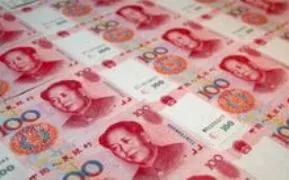
Chinese money supply exceeds RMB100 trillion for the first time
It reached RMB 103.61 trillion in March.
The People's Bank of China, the central bank, said China’s M2 or the total amount of monetary assets it holds, reached RMB 103.61 trillion in March. This total was 15.7% year-on-year, and 0.5 and 1.9 percentage points higher, respectively, than that at the end of March 2013 and the full year of 2012.
The Chinese Academy of Social Sciences said M2’s fast growth was due to demand from the real economy and the continued rise in outstanding foreign exchange funds. China’s fast economic growth in recent years demanded more money while the deepening monetization process of social assets also demanded more money.
Government financial experts said the scale of China’s M2 basically meets the actual demands of economic development. In their opinion, it is not correct to judge inflation only through the high absolute amount of the M2 and the high currency ratio to GDP.
China’s M2 to GDP ratio is close to 190%. Analysts said the high M2 to GDP ratio is due mainly to China’s underdeveloped financial market and high savings ratio. In 2011, the global average M2 to GDP ratio was 1266%.
The government said a lot of effort will be made to advance economic transformation and optimize financing mode to keep a moderate rise in the money supply.
China noted that the urbanization, industrialization and “informatization” for local governments at all levels and public and private enterprises demand a large financing requirement. And the increase in financing requirements offers a broad market for bank loans and demands more credit resources.
Analysts said the increase of fund outstanding for foreign exchange leads to the inflow of bank deposits and a drop in the loan-to-deposit ratio so as to strengthen bank's capability in credit supply.
The fund outstanding for foreign exchange was only RMB 3.48 trillion in 2003 and RMB 25.85 trillion in 2012. The dramatic increase of capital inflow led to a significant increase in money supply because of outstanding foreign exchange funds.




![Lorem Ipsum [ABF 1]](https://cmg-qa.s3.ap-southeast-1.amazonaws.com/s3fs-public/styles/exclusive_featured_article/public/2025-03/a_hand_pointing_to_a_futuristic_technology_5b87c9d0e3_1.png.webp?itok=2w0y1WhS)


![Cross Domain [Manu + SBR + ABF + ABR + FMCG + HBR + ]](https://cmg-qa.s3.ap-southeast-1.amazonaws.com/s3fs-public/styles/exclusive_featured_article/public/2025-01/earth-3537401_1920_4.jpg.webp?itok=WaRpTJwE)







 Advertise
Advertise

